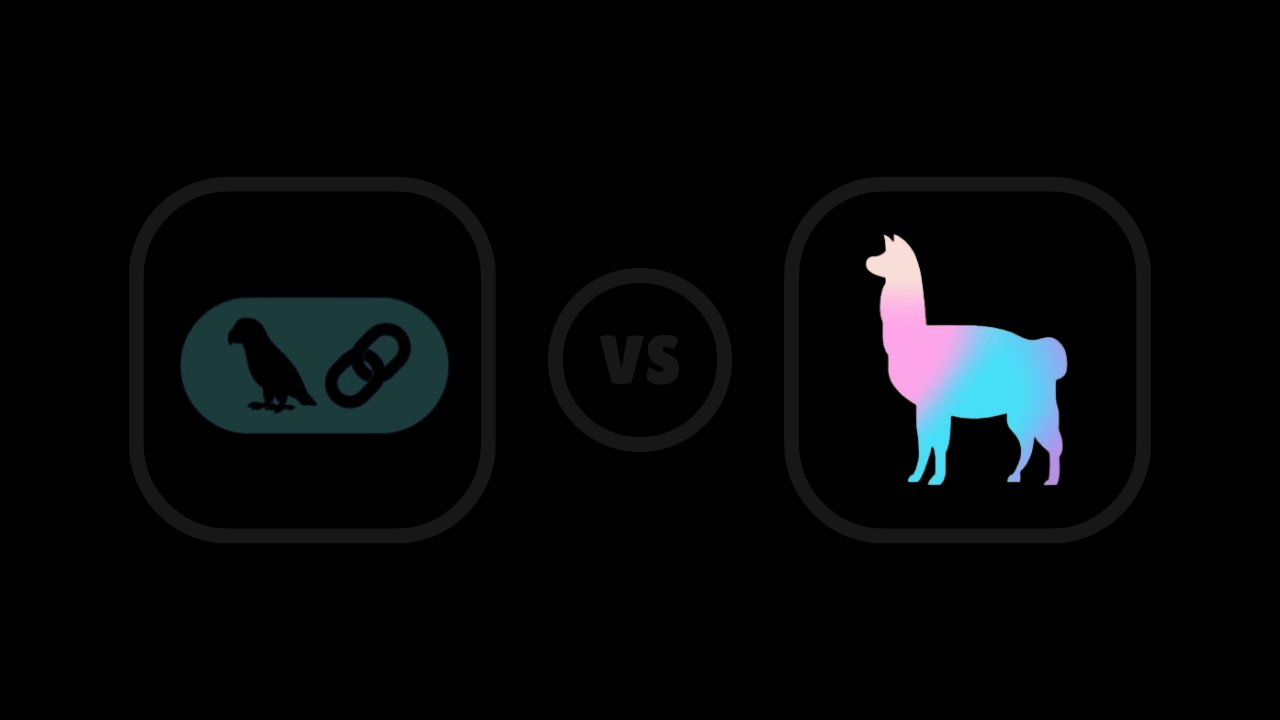The Best AI Productivity Tools to Get More Done in Less Time
This article will cover some of the best AI productivity tools, explaining what they're good at and who they're best for.
In this comprehensive comparison of LangChain and LlamaIndex, we explore the key differences, features, and use cases of these two powerful frameworks for building LLM applications.
Written by Fullstacko Team

LangChain and LlamaIndex are two popular frameworks designed to simplify the development of large language model-based applications, but they have different focuses and use cases.
Below is a comparison of the two:
LangChain is a more general-purpose framework designed to facilitate building applications using language model.
It provides a set of tools to chain together multiple language model operations (hence the name “LangChain”) to create more complex systems.
LangChain helps integrate LLMs into broader workflows, allowing developers to build end-to-end applications that leverage LLMs for tasks like document processing, dialogue management, reasoning, and task automation.
Primary use cases of LangChain are conversational agents, multi-step workflows, task automation, LLM-driven applications, data augmentation, and more.
LlamaIndex (formerly known as GPT Index) is a framework primarily aimed at building search and retrieval systems for large datasets, documents, and knowledge bases.
It focuses on creating an index for documents that allows large language models (LLMs) to retrieve and process information more efficiently.
It helps in creating sophisticated document querying systems that can retrieve and summarize data from large datasets using LLMs.
Primary use cases of LlamaIndex are document indexing, search engines, QA systems, document retrieval and summarization.
LangChain is more flexible and offers a broader range of functionality, which means it might have a steeper learning curve for newcomers.
However, it is incredibly powerful for building complex LLM-based workflows and systems.
LlamaIndex is relatively simple to get started with when your focus is primarily on building document indexing systems and performing efficient querying.
The framework abstracts much of the complexity of document indexing, making it ideal for search-based applications.
LangChain provides extensive integration with most LLMs (like GPT, Cohere, Claude etc.) and external tools (APIs, databases, web scraping, etc.), which makes it more adaptable for building custom workflows or integrating with other systems.
It can integrate with a variety of document sources, databases, and knowledge bases. However, it’s more narrowly focused on indexing and retrieval, so it might not be as suited for more general-purpose language model workflows.
LangChain is designed to be highly extensible, with support for many different types of tasks and tools. Its modular architecture allows you to combine different components for diverse use cases, whether it’s processing documents, interacting with external APIs, managing context in conversations, or building full-fledged applications.
While LlamaIndex is highly optimized for document indexing and retrieval, its flexibility is more limited to that context. You might have to combine it with other libraries for more complex LLM workflows.
LangChain has a larger and more active community, with a variety of resources and tutorials available for developers interested in building all kinds of LLM-powered applications.
The LlamaIndex community is growing, but it’s more specialized compared to LangChain’s broader ecosystem. It’s a go-to for developers who specifically want to build document-based search applications.
While it supports various workflows, it can become complex when handling large-scale operations, especially if multiple LLM calls or external tools are involved. Performance depends on how the chains and tools are configured.
Its primary focus is efficiency in handling large datasets for search and retrieval, and it’s optimized for these types of operations. It should scale well in environments where fast document retrieval is crucial.
| Feature | LlamaIndex | LangChain |
|---|---|---|
| Primary Use Case | Document indexing, search, retrieval | General LLM-based applications, workflows |
| Focus | Efficient document query and retrieval | Complex LLM workflows and task automation |
| Ease of Use | Easier for document search-based use cases | Requires more setup and understanding |
| Core Features | Document indexing, optimized querying | Chains, prompt engineering, tool integration |
| Flexibility | Less flexible for general LLM applications | Highly flexible, supports diverse use cases |
| Integration with LLMs | Integrates with LLMs for document processing | Extensive LLM and tool integration |
| Community | Smaller but growing | Larger, more active community |
Choose LangChain when:
Choose LlamaIndex when:
LangChain and LlamaIndex are both robust frameworks designed for developing applications powered by large language models (LLMs).
LlamaIndex is great for use cases focused on document indexing and search, while LangChain offers more flexibility for building general-purpose LLM-driven applications.
Both frameworks offer powerful capabilities, and choosing between them should be based on your specific project needs and goals.
Other articles from our collection that you might want to read next.
This article will cover some of the best AI productivity tools, explaining what they're good at and who they're best for.
An in-depth guide to machine learning use cases in retail industry, complete with explanations and useful pointers.
Discover the best natural language processing books that can help you kickstart your NLP career.
Get weekly analysis of vital developments, ground-breaking innovations, and game-changing resources in your industry before everyone else. All in one place, all prepared by expert agents.